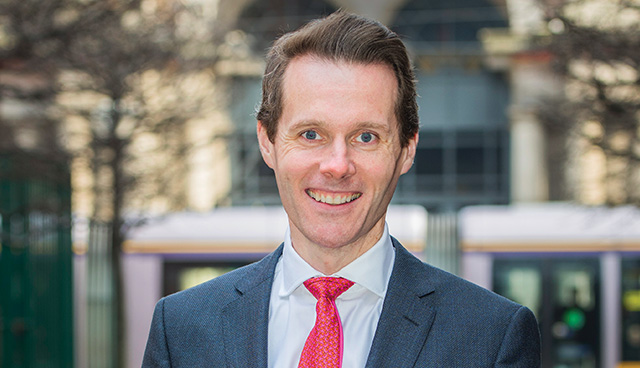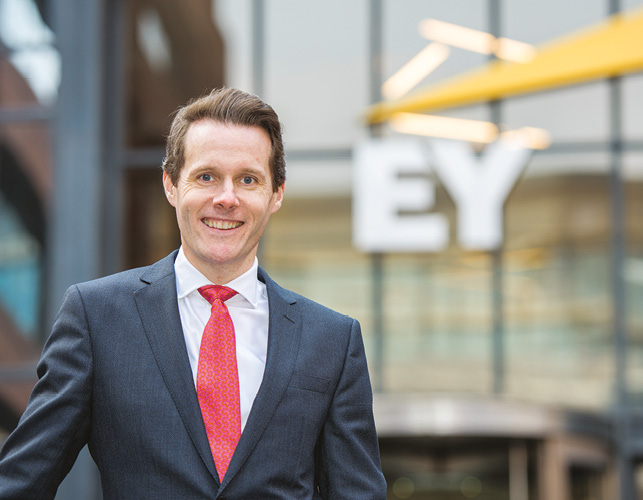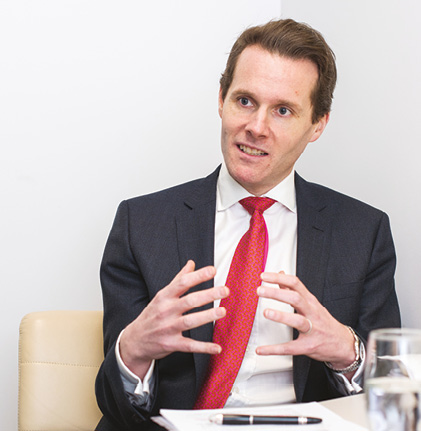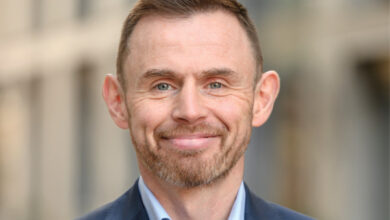Creating our own destiny


Shane MacSweeney, Partner and Head of Government and Infrastructure at EY talks to Owen McQuade about the ambitions of Project Ireland 2040, its potential to shape a future Ireland and the challenges of implementation.
Welcoming the launch of the National Planning Framework (NPF) and the National Development Plan (NDP) as “key stepping stones” to infrastructure improvement in Ireland, EY Partner Shane MacSweeney believes a focussed and detailed delivery plan must now be forthcoming.
“We now have an ambition but we must set out how we are going to realise that ambition,” he states.
MacSweeney believes that a delivery plan underpinning the vision set out in Project Ireland 2040 is key not only to repairing the expenditure deficit that has existed for infrastructure over the last decade but also shaping the future of Ireland. However, he is wary that without a solid plan for delivery, the ⇔116 billion earmarked for investment under Project Ireland 2040 could be volatile to market changes.
“The 116 billion investment almost needs to be viewed as current expenditure because if there are any adverse market changes, be it from geo-politics, Brexit or anything else, history has demonstrated that infrastructure suffers.”
For this reason, he has emphasised the need for a cross-departmental focus on prioritising projects that are going to deliver the greatest economic benefit in the relatively short term, while also maintaining the overall long-term vision and ensuring implementation.
He believes that the creation of a separate independent body to oversee the delivery of the plan would provide the focus needed to ensure Project Ireland 2040 is a success. This assertion is based on his recent experiences in Australia, where he worked for several years on projects that were part of the national infrastructure plan, delivered by Infrastructure Australia.
Originally arriving in Australia with a 12-month assignment of building out 50km of railway for the Rail Link Project in Melbourne, procured as an alliance (collaborative form of procurement), MacSweeney extended his stay and contributed to a breadth of projects including rail, road, social housing, hospitals and the building of Sydney’s second airport.
Explaining the ethos of Infrastructure Australia, he says: “What the body endeavoured to do was to depoliticise infrastructure projects and instead put the primary focus on developing projects based on sound economic rationale.”
“Another key element of Infrastructure Australia’s analysis was assessing the economic correlation between projects, i.e. whether there was an incremental economic boost in delivering projects that related to each other in tandem. A final element of their analysis was to look at cities as a whole rather than looking at specific sectors such as transport, health, etc. This gave a much better insight into the economic multiplier infrastructure development can deliver as a whole.”
Infrastructure Australia was a separate independent body established by the Australian Government to oversee the delivery of the national plan. MacSweeney says: “The fact that it was independent, although still reported through the Minister for Infrastructure, and that it was one step removed from Government really created a focus.”
Challenges
Outside of the need for a detailed delivery plan, MacSweeney has identified a number of other challenges he believes the ambitions of Project Ireland 2040 will face. The largest of these he explains is around skill shortages in delivering such a large-scale investment programme.
“Our skilled workforce was severely displaced during the downturn and the levels of skills labour in areas such as construction are around 50 per cent of what they were 10 years ago. The view still exists that the construction industry is cyclical and for this reason I don’t see a huge influx or return of skilled labour, unless there is concerted effort by both Government and the private sector.

“The NPF and the NDP are two vehicles in which we can really realise our ambition and create our own destiny around what Ireland will look like to 2040.”
“Within the NDP, a large number of the projects are in the planning or business case development stage and so we actually have time to invest in encouraging people back into training for new skills.”
He adds that the wider macro-economic issues of Ireland will also have a part in attracting sufficient skills for such a project, including in areas such as the availability of housing, the cost of living and accessibility to things such as education and healthcare.
As a further challenge, he also highlights the need for governments to keep the pace of technological change in terms of policy development. “This is going to be critical as to how we are going to embrace technology over the next 10 years. There are technologies that are going to be vital to the delivery of the NPF and the NDP that haven’t been invented yet.”
Acquisition
Economic analysis, both at the macro and micro levels, has never been more relevant to both public sector and private sector clients of EY, MacSweeney explains. Recently the professional services firm acquired DKM Economic Consultants in its first Irish acquisition, expanding its existing Government, Infrastructure and Economic Advisory services in Ireland.
“Ireland is at an interesting economic cross-roads; on the one hand we have the fastest-growing economy in Europe, but on the other hand we have significant uncertainty with the advent of Brexit, geo-politics and wider technological disruption, to name but a few.
“Our Clients are operating in this dynamic environment and are grappling with increased levels of uncertainty. Their questions are becoming more complex. How will Brexit impact my company? What will wage inflation look like over the next few years? Will skills be available? How can we fund and deliver our infrastructure gap? How can Government develop policies fast enough to respond to the pace of technological change? Very complex and challenging questions.
“We believe that a number of these challenging questions will be better answered through detailed economic analysis and forecasting, thus why we have significantly expanded our Economic Advisory offering with the acquisition of DKM Economic Consultants.”
He adds: “Having a grip on economic metrics and understanding economic forecasts is key to the economic development of Ireland. Our economic forecasts, at the moment, are extremely positive. However, we need to ensure that we can maintain a steady macro-economic environment, avoiding a boom-bust cycle. That will be critical to the implementation of Project Ireland 2040.”
“Smart infrastructure technologies can deliver solutions at a fraction of the cost.”
Funding
Although the majority of the Project Ireland 2040 will be funded centrally through the Exchequer, methods are also being explored to attract private funding and to take advantage of the largely held view that global capital for long-term stable infrastructure projects is available. MacSweeney believes that an innovative approach to private finance must be adopted which go beyond the established public private partnerships (PPPs), which he outlines have been utilised in Ireland for over 20 years.
However, he believes that solving infrastructural problems does not always need significant investment in terms of building or constructing new projects. “The State can leverage already-developed smart technologies to deliver infrastructure solutions. Smart infrastructure technologies can deliver solutions at a fraction of the cost. For example, a number of US cities (including Pittsburg and Chicago) are using Artificial Intelligence to augment their predictive traffic controls systems to provide significant travel time savings and reduced congestion. Such infrastructure is a cost-effective way of delivering solutions to critical infrastructure problems, while simultaneously delivering significant economic benefits” MacSweeney adds: “These are the types of things we can be doing now when we are waiting on the bigger projects to come on board.”

MacSweeney suggests that technology evolution and innovation in the private sector can be harnessed by government provided that policy making is flexible to this approach, pointing out the success had by other global governments who have opened up their anomalised data to the private sector through hosting initiatives such as hackathons.
Future
One of the most positive elements of the NDP which MacSweeney points to is the recognition of necessary investment to bolster the Dublin-Belfast economic corridor. As well as recognising Sligo as a regional centre, the plan recognises Letterkenny and Drogheda-Dundalk as “important cross-border networks for regional development”, recognising the risk posed by Brexit.
Concluding, MacSweeney describes himself as “very optimistic” about Ireland’s future. “On a personal level my family and I returned to Ireland from Australia because we could see that Ireland, economically, had turned a corner and was heading towards greater prosperity. The NPF and the NDP are two vehicles in which we can really realise our ambition and create our own destiny around what Ireland will look like to 2040. To get to play a role in that, no matter how small, is very exciting for myself and for EY.”
Profile: Shane MacSweeney
Cork-born, Shane completed a Bachelor of Commerce at UCC, majoring in accounting and economics before training to become a chartered accountant. His focus throughout his career has been infrastructure, corporate finance, and economic advisory. Before working in both the Middle East and Australia, major projects he assisted on in Ireland included the NRA toll roads programme and Metro North.
He currently operates a dual role of growing EY’s new Government and Infrastructure Advisory team and as lead partner for the public sector in EY. Shane is married with four children (one boy and three girls aged 11, 8, 6 and 3) and recently completed Quest Kenmare, an adventure race of 67km, incorporating cycling, mountain running and kayaking.





